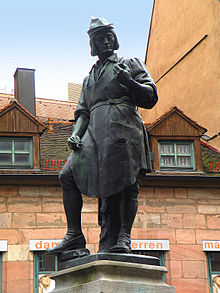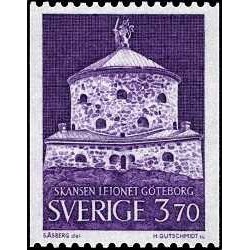- جدید
- ناموجود



توجه : درج کد پستی و شماره تلفن همراه و ثابت جهت ارسال مرسوله الزامیست .
توجه:حداقل ارزش بسته سفارش شده بدون هزینه پستی می بایست 180000 ریال باشد .
توجه : جهت برخورداری از مزایای در نظر گرفته شده برای مشتریان لطفا ثبت نام نمائید.

Peter Henlein (also spelled Henle or Hele)[1] (1485 - August 1542), a locksmith and clockmaker of Nuremberg, Germany, is often considered the inventor of the watch.[2][3] He was one of the first craftsmen to make small ornamental Taschenuhren, portable clocks which were often worn as pendants or attached to clothing,[4] regarded as the first watches. Many sources also erroneously credit him as the inventor of the mainspring.[1][5][6][7]
Little is known about Henlein's life. He apparently apprenticed in his youth as a locksmith. At the time, locksmiths were among the few craftsmen with the skills and tools to enter the new field of clockmaking,[8] and Henlein also became a clockmaker. On September 7, 1504, he was involved in a brawl in which a fellow locksmith, George Glaser, was killed. He sought asylum at a local Franciscan monastery, where he stayed for four years, until 1508. In 1509 he became a master in the city's locksmith guild.[2] He became known as a maker of small portable ornamental spring-powered brass clocks, very rare and expensive,[2] which were fashionable among the nobility of the time. These were sometimes worn as pendants or attached to clothing,[9] and so may be considered the first watches, although at over 3 inches long[4] they were bigger than the first true pocketwatches which appeared about a century later, and were not able to fit in pockets. He is mentioned in the city's records as the supplier of small spring-driven clocks, which were given as gifts to important people.[2] He was supposedly the first craftsman to build clockworks into "Bisamköpfe", small containers fashioned from precious metals for fragrances or disinfectants.[2] For example a Nuremberg paper records that in 1524 he was paid 15 florins for a gilt musk-ball watch.[10] He also built a tower clock for Lichtenau castle in 1541, and was known as a maker of scientific instruments.[2]

Henlein's fame is mostly due to a passage by Johann Cochläus in the 1511 Cosmographia by Pomponius Mela:[1][2]
Peter Hele, still a young man, fashions works which even the most learned mathematicians admire. He shapes many-wheeled clocks out of small bits of iron, which run and chime the hours without weights for forty hours, whether carried at the breast or in a handbag
His reputation as the inventor of the watch came after his rise to popular consciousness in the 19th century, through a novel by Karl Spindler, Der Nürnberger Sophokles.[2] This was made into a 1939 film, and his likeness appeared on a 1942 German stamp.[2] However, although he was a notable and talented clockmaker, there were other clockmakers making small clocks at the time,[3][8][10] and no contemporary source from his time credits him with inventing anything.[2] The mainspring which made portable clocks possible, often attributed to him,[1][5][6][7] actually appeared in the early 15th century, almost a century before his work.[11][12] Perhaps the most that was said of him by his peers comes from Johann Neudorfer in 1547 shortly after his death:[2]
This . . . Henlein was very nearly the first of those who invented how to put small clocks into little boxes.
تشکر نظر شما نمی تواند ارسال شود
گزارش کردن نظر
گزارش ارسال شد
گزارش شما نمی تواند ارسال شود
بررسی خود را بنویسید
نظر ارسال شد
نظر شما نمی تواند ارسال شود

check_circle
check_circle















